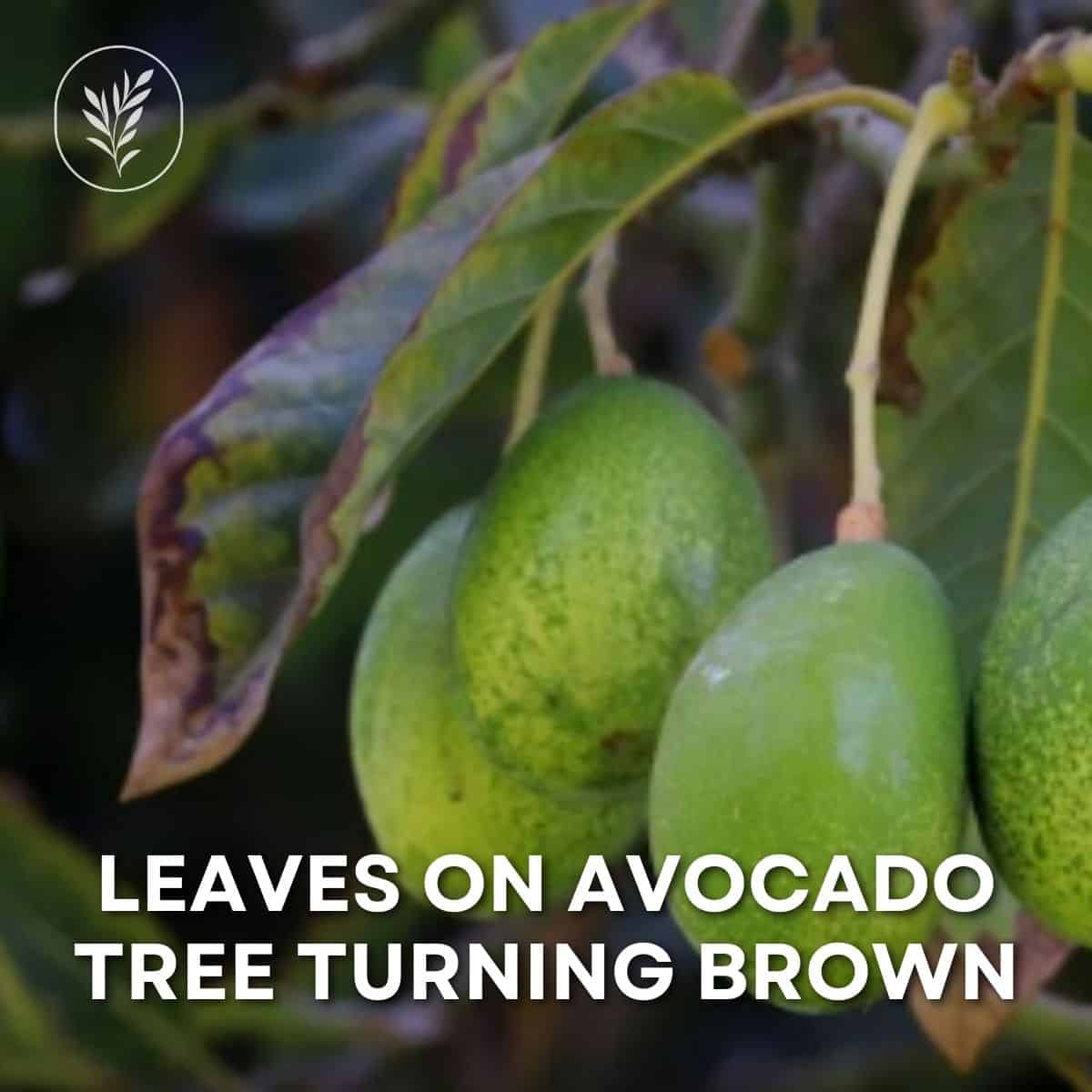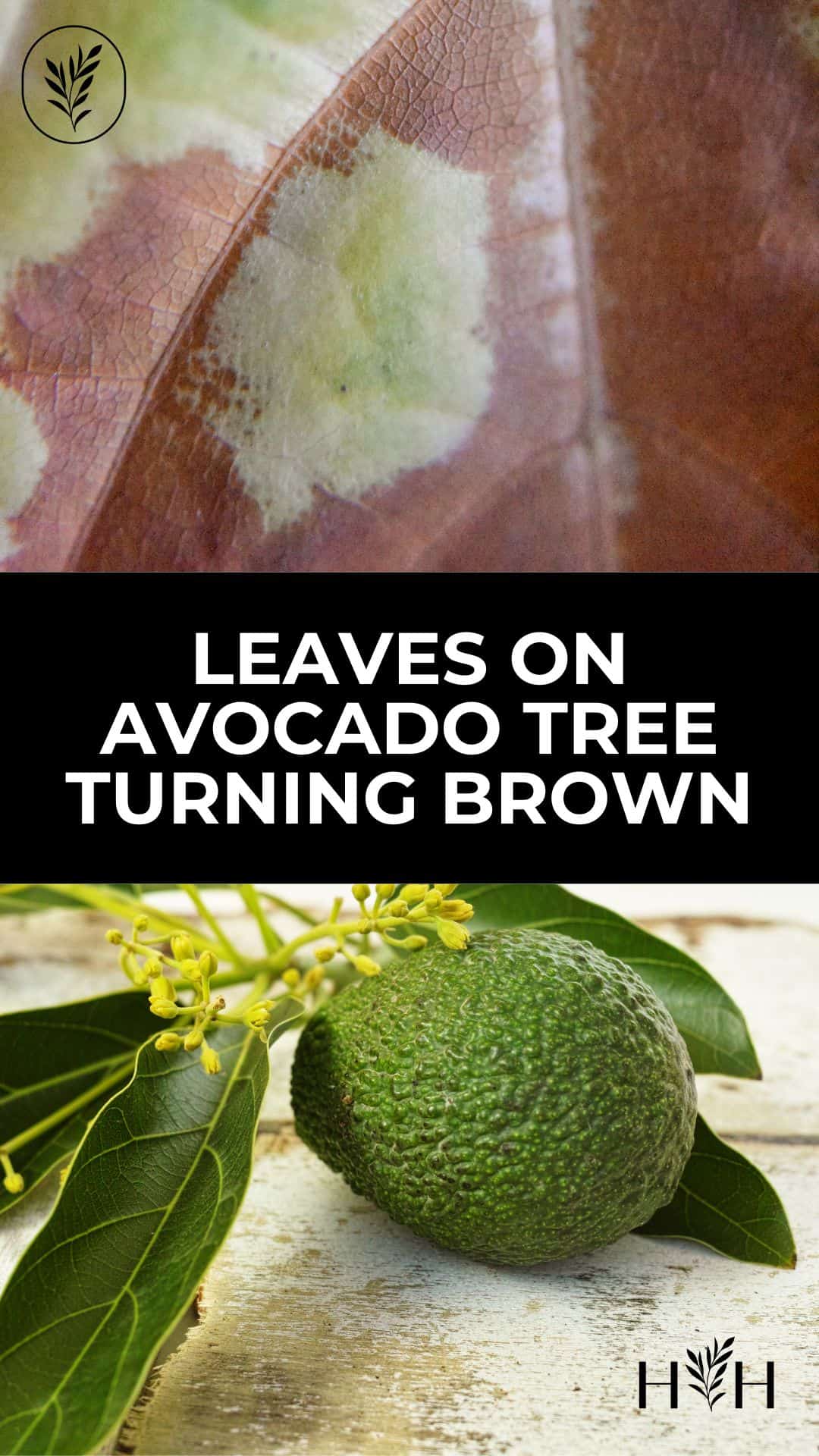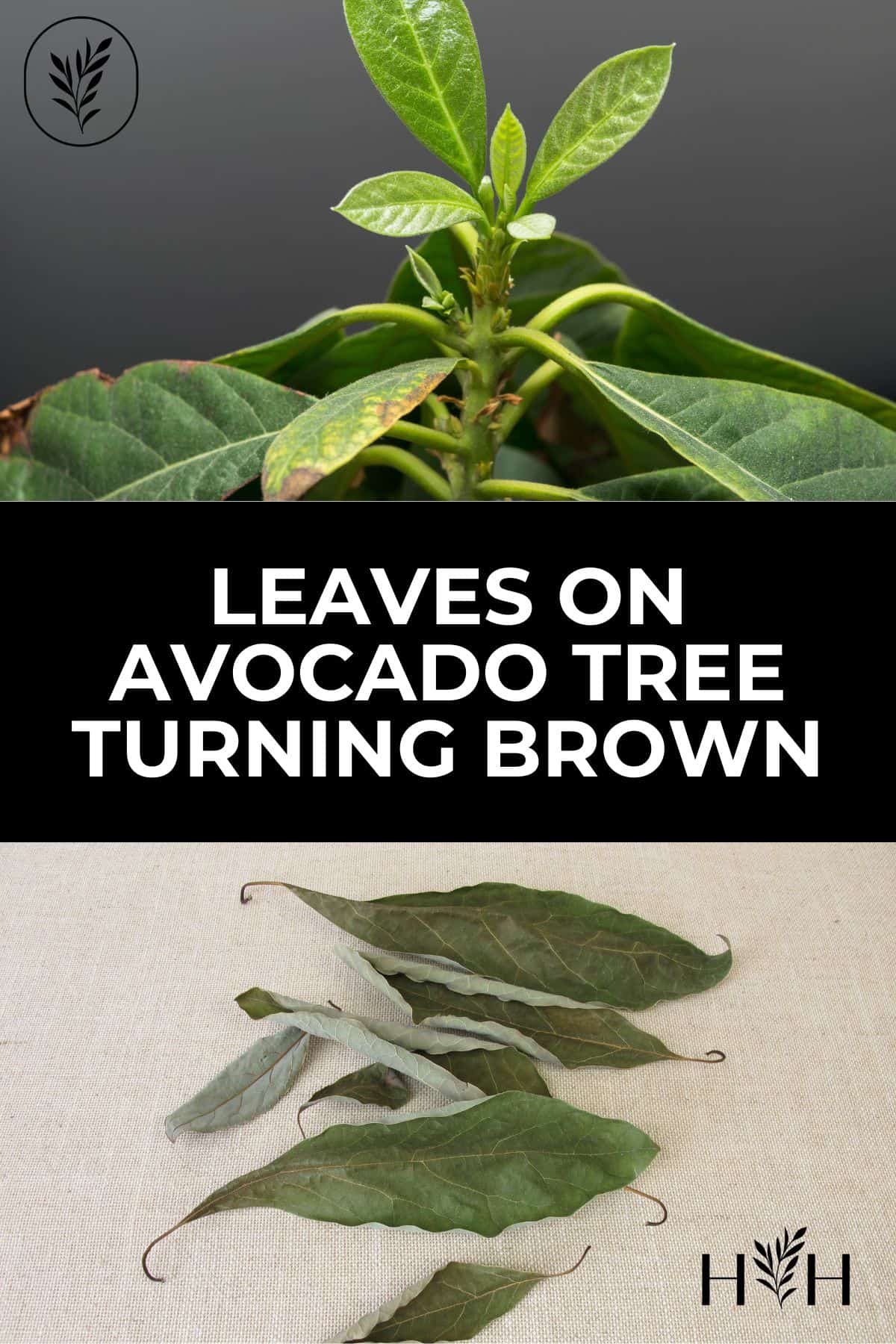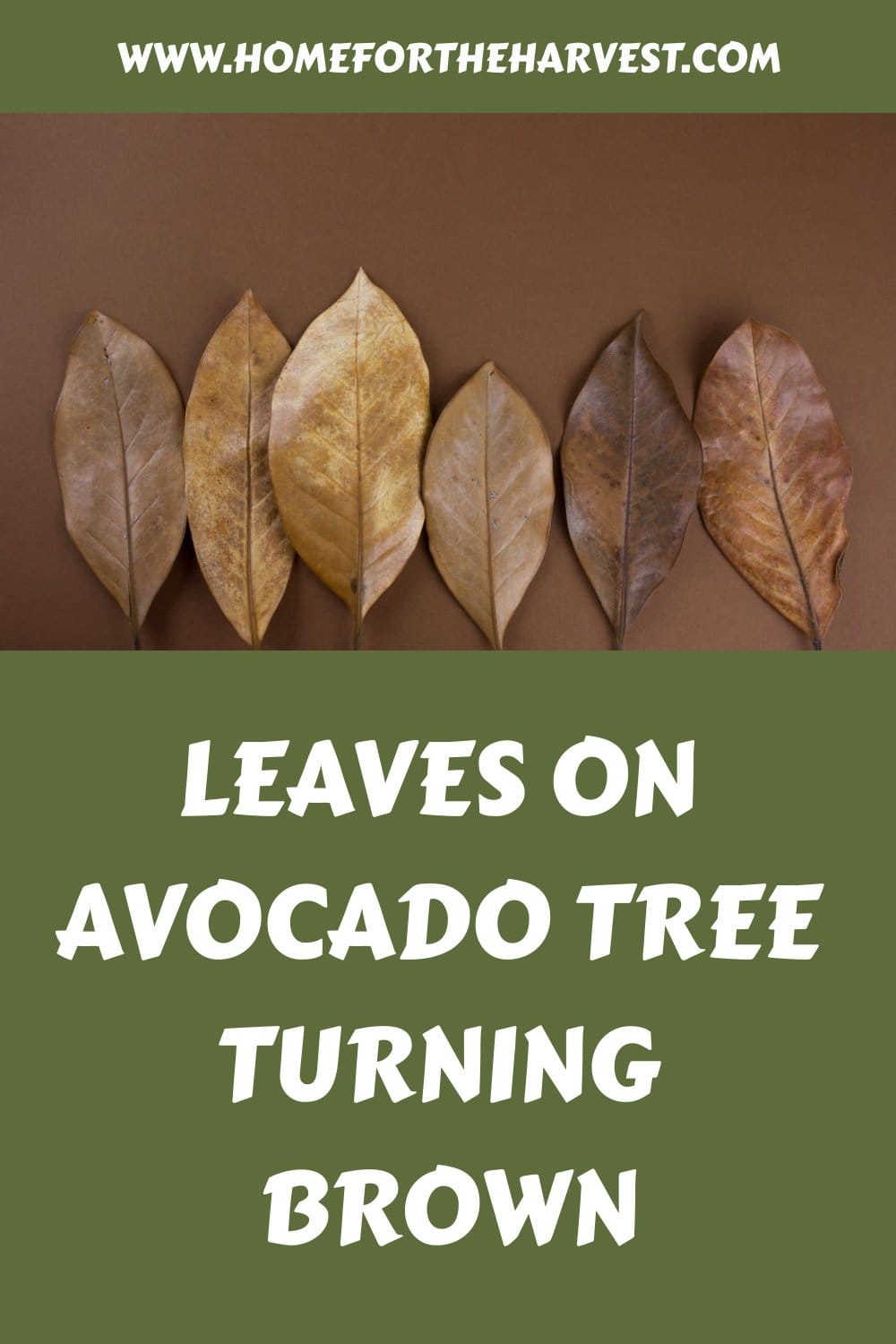Are you wondering why the leaves on your avocado tree are turning brown? If so, don’t worry – it’s a common problem for many homeowners. The good news is that there are solutions to help keep your avocado tree healthy and thriving. Let’s dive in together to understand why the leaves on an avocado tree sometimes turn brown. Here is why leaves on avocado tree turning brown!
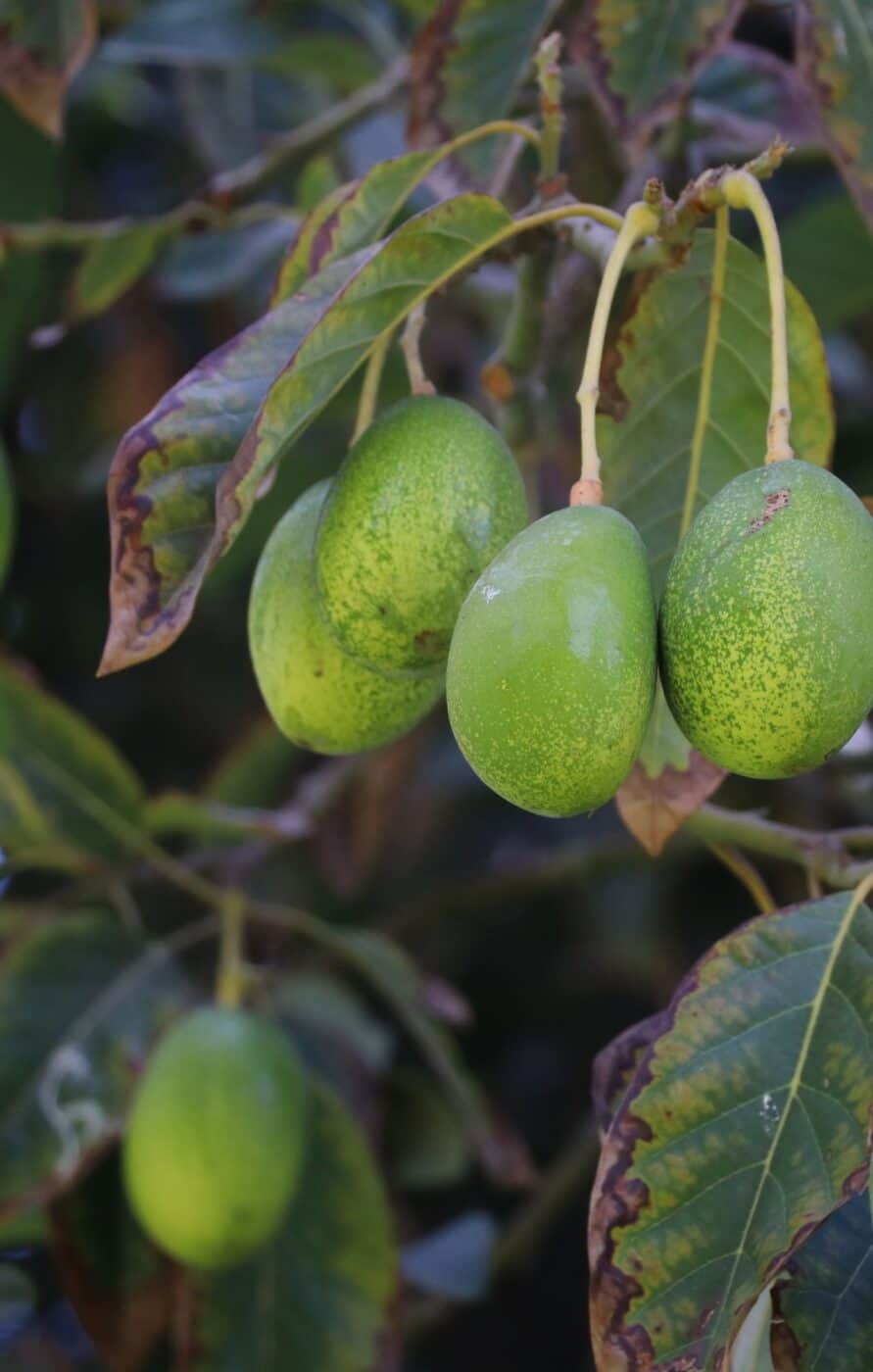
Causes of brown leaves on avocado trees
Brown leaves on avocado trees can be caused by a variety of factors. Nutrient deficiencies, such as nitrogen or potassium deficiency, are one of the most common causes. If your tree isn’t getting enough nutrients from the soil, it will start to show signs of stress in its leaves and branches.
Pest infestations can also cause browning in avocado leaves. Aphids, mealybugs, and scale insects all feed on the sap inside the plant’s stems and leaves which can lead to yellowing or brown spots appearing on them.
Environmental stressors like too much sun exposure or extreme temperatures can also cause discoloration in avocado tree foliage. Too little water is another factor that could result in brown patches developing on the leaves due to dehydration and lack of hydration for your tree’s root system.
Finally, disease-causing fungi may attack an already weakened plant leading to leaf discoloration as well as other symptoms like wilting or stunted growth.
Identifying the problem
When it comes to avocado trees, brown leaves can be a sign of distress. It’s important to identify the cause of the problem in order to find an effective solution. The first step is to examine the tree’s environment and look for signs of pests or diseases.
If you notice any insects on your tree, such as aphids or mealybugs, then they could be causing damage that leads to brown leaves. Check both sides of each leaf for small white spots which may indicate an infestation by these bugs. You should also check for any webbing around branches and trunks which could signal spider mites have taken up residence in your tree.
Inspecting the soil is another way to determine if there are any problems with your avocado tree’s health. If you see discolored patches on topsoil, this could mean that root rot has set in due to overwatering or poor drainage conditions. To confirm this diagnosis, dig down a few inches into the soil and take note of its color and texture – healthy roots will appear white while those affected by root rot will be dark-colored and mushy when touched.
Fungal diseases can also lead to brown leaves on avocado trees so keep an eye out for yellow spots on foliage which may indicate mildew or rust infections caused by too much moisture in the air or soil respectively. Additionally, pay attention if some areas seem greener than others; this could point towards anthracnose infection where only certain parts of a plant are affected by fungus spores carried through water droplets from other plants nearby.
Finally, make sure that all fertilizer applications are done correctly as incorrect amounts can cause nutrient deficiencies leading to discoloration among other symptoms like stunted growth or wilting leaves, flowers, and fruit. Too much nitrogen can burn foliage resulting in yellowish-brown patches while not enough potassium might result in dry edges along with dull green coloring overall – both scenarios require proper fertilization techniques according to their respective needs.
After taking a close look at the leaves of your avocado tree, it’s time to move on and explore potential solutions for why they may be turning brown.
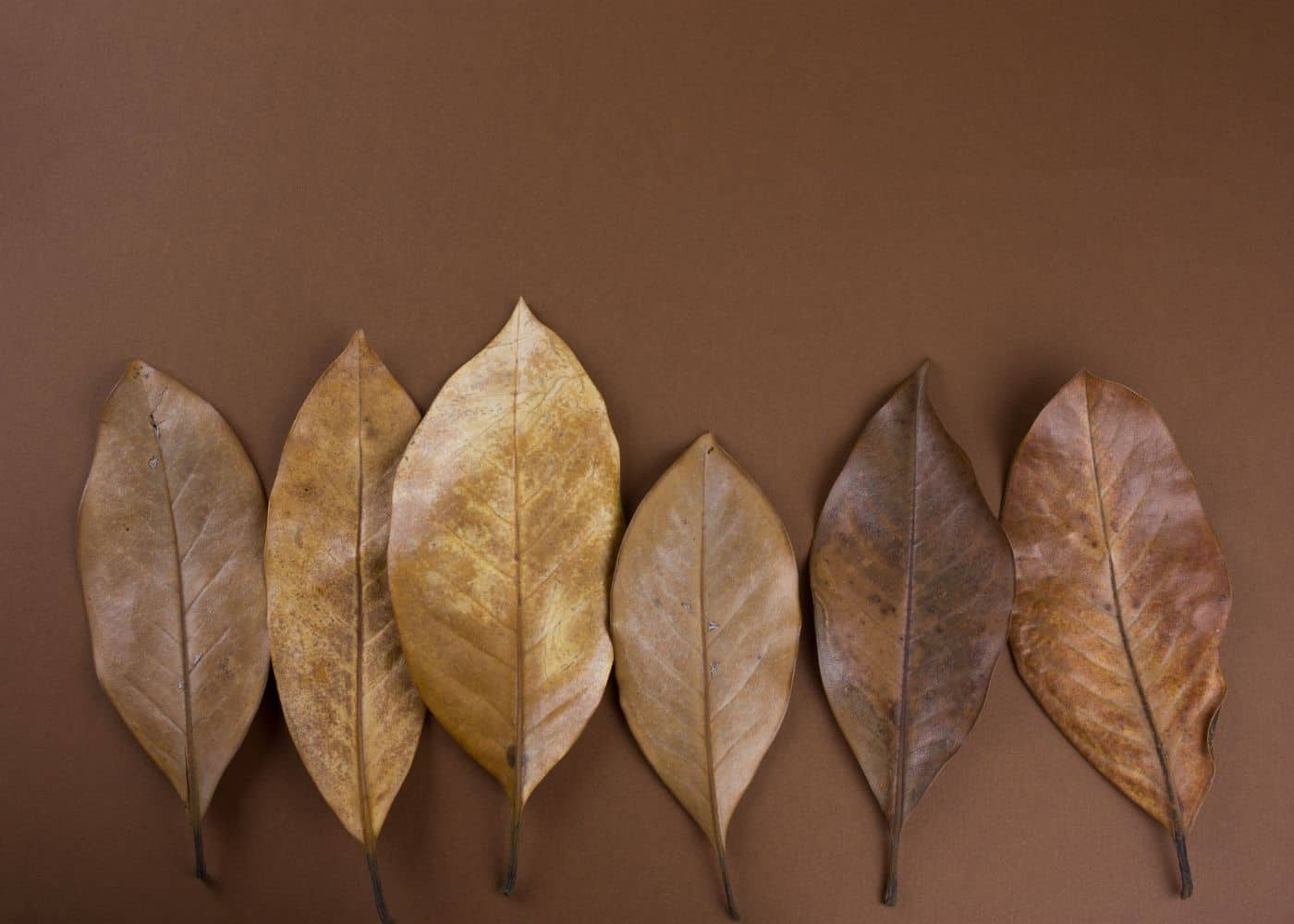
Solutions for brown leaves
Fertilizing is one way to address the problem. Make sure your tree is getting enough nutrients by applying fertilizer once or twice a year in spring and summer, following package instructions for amount and frequency. Pruning can also help if the tree has become too large or unbalanced. Remove any dead branches and shape them into an attractive form while keeping in mind that avocados need plenty of sunlight to thrive.
Pests and diseases are other possible causes of brown leaves on avocado trees. Inspect your tree regularly for signs of pests such as aphids, mealybugs, scale insects, whiteflies, mites, or nematodes; treat accordingly with insecticides or other methods recommended by your local nursery professional. Diseases like root rot can also cause browning leaves; prune away affected areas if possible and use fungicides as directed to reduce the spread of disease organisms.
Finally, make sure you’re providing adequate water for your avocado tree—too much water can lead to root rot but not enough will cause stress which may result in leaf discoloration or drop-offs from the plant entirely. Water deeply at least once per week during hot weather (twice weekly when temperatures reach 90 degrees Fahrenheit) so that moisture reaches all parts of the root system without saturating the soil around roots which could further encourage fungal growth leading to more problems down the line.
In addition to these solutions for brown leaves on avocado trees, there are some prevention tips you should keep in mind. Choose a planting site with good drainage, avoid over-fertilizing, provide adequate air circulation around plants, mulch lightly around the base of the trunk but don’t pile it up against the stem itself, and inspect regularly for pests or diseases and take action promptly if found. Following these steps will help ensure the healthy growth and enjoyment of your beautiful avocado tree.
If you’ve taken the necessary steps to address brown leaves on your avocado tree, now it’s time to focus on prevention tips that will help keep them from appearing in the future.
Prevention tips
To keep your avocado tree healthy and prevent brown leaves from occurring in the future, there are some simple prevention tips you can follow.
Watering is key to keeping your avocado tree healthy. Make sure to water deeply but not too often; once or twice a week should suffice depending on the weather conditions. Avoid overwatering as this can cause root rot and other problems that lead to brown leaves. Mulching around the base of the tree helps retain moisture while also preventing weeds from competing with it for nutrients.
Adequate sunlight is essential for an avocado tree’s health and growth, so make sure it gets at least 6 hours of direct sun each day if possible. If you have limited space or live in an area with cold winters, consider planting a dwarf variety which requires less light than full-sized trees do. Additionally, pruning away dead branches will help ensure that your tree receives enough light throughout its canopy for optimal growth.
Fertilizing regularly will also help keep your avocado tree healthy by providing essential nutrients such as nitrogen, phosphorus, potassium, and magnesium that promote strong roots and foliage growth which reduce susceptibility to disease or pests leading to brown leaves on the plant’s foliage. Look for fertilizers specifically designed for avocados; these usually contain micronutrients like iron which are beneficial for maintaining lush green foliage all year round.
Periodically inspect your avocado tree for signs of pests or diseases such as aphids or powdery mildew, which could lead to brown leaf discoloration if left untreated. To eradicate any unwanted visitors quickly before they cause serious damage, use insecticidal soap sprays or neem oil solutions when necessary.
By following these simple prevention tips, you can enjoy a beautiful and thriving avocado tree without worrying about pesky brown leaves appearing anytime soon.
By taking the necessary steps to prevent browning leaves on your avocado tree, you can ensure it will remain healthy and vibrant for years to come. Now let’s move on to how to enjoy your avocado tree.
Enjoying your avocado tree
Harvesting your avocado tree’s fruit is one of the most rewarding parts of having an avocado tree. When harvesting avocados, make sure they’re ripe by gently squeezing them; if the peel yields slightly but your finger doesn’t leave an indentation, then it’s ready for picking.
Once you have harvested your avocados, there are many ways to enjoy them. For a simple snack or side dish, cut the avocado in half and sprinkle it with salt and pepper before eating. If you’re feeling adventurous, try making guacamole – mash up some avocados with diced tomatoes and onions before adding lime juice for flavor. You can also add garlic powder or cilantro for extra flavor.
Avocado toast is another popular way to enjoy this tasty fruit – spread mashed avocado on top of toast (or even crackers) and top with salt and pepper or other toppings like feta cheese or smoked salmon for added texture and flavor. Avocado slices can also be used as a topping on burgers or salads instead of lettuce for added nutrition.
If you have too many avocados that won’t get eaten right away, don’t worry – they freeze well. Slice the flesh into cubes before freezing so that when you thaw them out later on they’ll still be usable in recipes like guacamole without becoming mushy first. This way you can enjoy fresh-tasting avocados all year round.
Enjoying your own homegrown avocado tree doesn’t have to be complicated – just harvest when ripe, use immediately, or store in the freezer until needed, then prepare however desired. With these tips in mind, anyone can become an expert at enjoying their very own homegrown crop of delicious avocados straight from their backyard garden.
FAQs about leaves on an avocado tree turning brown
Should I cut off brown leaves on avocado tree?
It is generally not recommended to cut off brown leaves on an avocado tree. Brown leaves can be a sign of stress or disease, and removing them could potentially cause further damage to the tree.
If you are concerned about the health of your avocado tree, it is best to consult with a professional who can assess the situation, take some samples, order some tests, and provide advice on how best to care for your plant. Pruning should only be done when absolutely necessary as incorrect pruning can lead to more problems down the road.
Why are my avocado plant leaves turning brown?
Avocado leaves can turn brown due to a variety of reasons, such as too much sun exposure, inadequate watering, or pest infestations. Overwatering can lead to root rot and cause the leaves to turn brown and curl up. Underwatering may also cause the leaves to become dry and brittle before turning brown.
Pests like aphids or mites can feed on the sap from avocado plants which will eventually cause discoloration in the leaves. It is important to inspect your plant regularly for signs of pests or disease so that you can take appropriate action if needed.
What does an overwatered avocado tree look like?
An overwatered avocado tree will show signs of distress, such as yellowing or wilting leaves. The leaves may become soft and limp due to a lack of oxygen in the soil. The bark may appear darker than normal and the trunk can become swollen at the base. Roots can also be affected, becoming blackened or mushy from too much water saturation. In extreme cases, an overwatered avocado tree may even die if not given proper care soon enough.
How often do avocado trees need to be watered?
Avocado trees require regular watering, especially during the warmer months. The frequency of watering depends on a variety of factors such as soil type, temperature, humidity, and wind. Generally speaking, avocado trees should be watered deeply once or twice per week in warm weather and every two to three weeks in cooler weather. To ensure that your tree is receiving enough water without over-watering it, check the moisture level of the soil with your finger before deciding whether to water it or not.
Before you go…
As you can see, brown leaves on avocado trees are a common problem. However, with the right knowledge and preventative measures in place, it doesn’t have to be a major issue. With proper care and attention, your avocado tree will continue to thrive and produce delicious fruit for years to come. If you’re ever unsure about why your leaves are turning brown or what steps you should take next, don’t hesitate to consult an expert. Remember that if your leaves on the avocado tree turning brown are addressed quickly and correctly, it won’t be long before you’re enjoying the fruits of your labor.
Resources
- Tips for growing avocado trees indoors
- Everything you need to know about planting avocado trees
- How to fertilize an avocado tree
- How to prune an avocado tree
- When to graft avocado trees
References
- Jukes, J. (2017). How to Grow Your Avocado. CreateSpace Independent Publishing Platform.
- Schaffer, B. A., Wolstenholme, B. N., & Whiley, A. W. (2013). The Avocado: Botany, Production and Uses (pp. 61-63). CABI.
- How to Grow Your Own Avocado Tree from the Seed
- Reich, L. (2012). Grow Fruit Naturally: A Hands-on Guide to Luscious, Home-grown Fruit (pp. 86-89). Taunton Press.
Need more info?
Are you interested in learning more about leaves on avocado tree turning brown? Here are our best articles about it!


